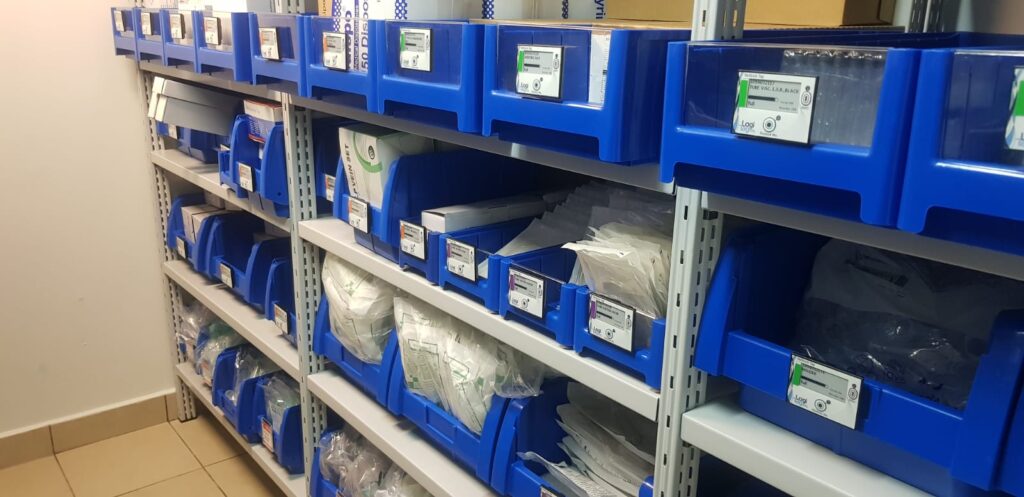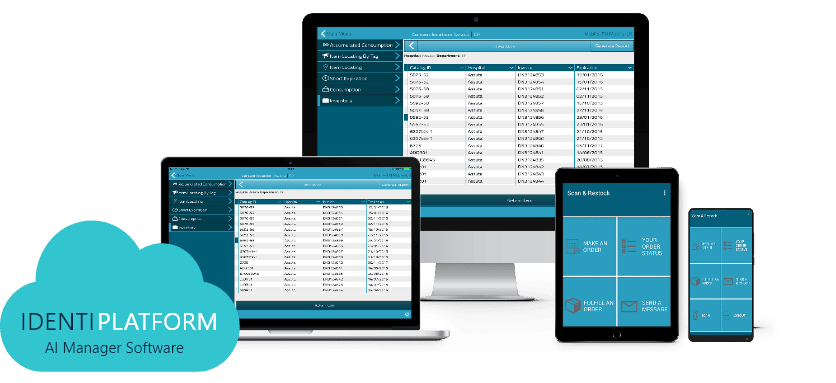What’s inside:
In this article, we’ll look at the Item Master management:
- The hospital source of truth and the problems that hospitals struggle with
- The impact the item master has on missing items on digital surgery records.
- The phenomenon of the virtual item master
It’s time to master your Item Master.
The hospital Master Catalog List is the central cog that keeps the hospital supply chain moving.
If there are data errors, inconsistencies, duplicates and gaps in the core data that all hospitals systems feed off, then this has a negative impact across many departments and functions.
Gaining full visibility and tracking of high dollar medical devices and implants is a particular priority, where accurate data is needed to:
- Monitor vendor contracts
- Manage hospital inventory levels
- Manager new items utilized by staff
- Meet regulatory requirements
- Generate accurate medical billing
- Optimize reimbursements
Why Item Master management became a hot topic
Hospitals have known about inefficiencies in their Item Master management for years but the issue was never a priority. Instead, consultants would be called in, or workarounds would be created, in an attempt to improve the digital capture of medical surgical supply chain data.
But these efforts were a bit like putting a band aid on a bullet wound.
The effects of COVID19 on hospital supply chains
The pandemic was a turning point.
COVID19 caused worldwide supply chain disruption, prompting hospitals to seek a wider range of global vendors and alternative products in order to maintain their inventory.
While healthcare organizations worked hard to solve their external problems, changes they made to the hospital’s supply chain put a strain on their already fragile internal systems.
In particular, the master catalog, which is the data source behind the EMR, ERP and MMIS, was unable to cope with a significantly larger and more complex hospital inventory.
Before COVID it was reported that many hospital Item Masters contained 30% bad data.
Just imagine what the figure would be with today’s extended vendor-base and wider product range.
Every item that is not successfully scanned during surgery presents a risk factor for the organization.

The effect of Item Master errors and omissions
The expansion of the hospital supply chain highlighted weak points in Item Master maintenance. Hospitals are struggling with incorrect or incomplete data and missing SKUs.
These Item Master deficiencies can have an impact in several key areas:
- Nurses and logistics staff see an increase in their supply chain workload due to the more complex inventory
- Clinical data capture at the point of care becomes even more challenging.
- The limitations of tools and systems used to capture clinical data in the surgical setting are exposed.
- Nurses worry about compromised patient safety when medical devices and implants are not successfully documented
- Unrecorded consumption leads to incomplete billing and lost reimbursement
- Undocumented consumption distorts the real picture and prevents effective inventory management.
- The importance of a comprehensive and accurate item list, as the central reference point for the supply chain, is reinforced
In the aftermath of COVID19, the inability of the master catalog list to cope with the scale and complexity of today’s supply chain, has been noted by hospital management. There is now fresh impetus to improve the resilience of internal systems, so that they can deal with the current reality.
Hospital Supply Chain Disruptions
The post pandemic supply chain has a new normal – a broader vendor base and a ton of substitutions.
How can hospitals manage a more complex supply chain with a higher volume of vendors and a far more varied product base?
An accurate Master Catalog is particularly vital in connection to high value medical devices, implants and consumables.
to talk about having a perpetual inventory – but maybe we need to take a step back.
Perhaps it’s actually a perpetual Item Master that’s needed now in order to achieve a balanced inventory.
What’s the difference?
Perpetual Inventory v Perpetual Item Master List
In an ideal world, hospitals would achieve an uninterrupted supply of their entire medical inventory. This may not be 100% achievable but there are certainly ways to optimize the hospital supply chain.
A perpetual inventory system means that inventory is tracked and restocks are based on accurate consumption figures. Supplies are continuously available because all items used are reordered and replaced.
A perpetual Item Master list is when the central SKU list used by hospitals in their supply chain management, keeps up with the addition of new suppliers, new products, altered SKUs and other updates.
A perpetual Item Master catalog will be up to date and provide matches to all items scanned – without requiring time-consuming manual product searches and longwinded key-in tasks.
Hospitals are realizing that getting a well-maintained, accurate Item Master is crucial in order to gain visibility of their full inventory and achieve end-to-end item tracking.
The frailty of the post COVID Item Master list
The medical device and implant supply chain is immense. The US alone has more than 6,500 medical device manufacturers, each with a high volume of individual products.
It is said that, on average, there are around 28% item data alterations a year.
For most hospitals, their Item Master List is a long and detailed spreadsheet that is difficult to maintain. It can quickly become full of errors and missing large chunks of data.
The most crucial SKUs on the list are the high-value chargeable items. These need careful maintenance for ease of tracking and utilization.
The master catalog list has always been prone to inefficiencies. It:
- Struggles to keep pace with altered SKUs, as manufacturers change batch numbers or other variables.
- Isn’t able to track last-minute items and trunk stock that are delivered directly to the point of use and by-pass hospital systems
- Doesn’t capture items without tags or barcodes (such as screws and bolts)
- Triggers system errors on many items scanned in OR and procedure rooms
Hospitals have become resigned to using workarounds when SKUs fail to flow through hospital systems.
Post COVID though, there’s been an increase in the number of suppliers and SKUs, plus continued uncertainty around what will actually be delivered – even if a regular item is ordered, a substitute is often received.
Nurses do their best to document items at the point of care, usually using barcode or RFID scanners.
When items scanned hit the hospital Item Master but don’t find a match, the digital documentation process stalls.
Frustrated nurses fail to record the item and the it will likely require back-office attention – which may, or may not, result in the item being successfully recorded in hospital systems.
With so many SKUs to keep up with, the Item Master is proving to be a barrier rather than a facilitator within the supply chain workflow.
The repercussions of undocumented items
In recent years the disconnect between clinical and operational workflows is an area being tackled by many hospitals, with the aim of achieving a clinically integrated supply chain.
Data is like blood flowing through the veins of the supply chain – it is what triggers the movement of items along the chain, tracking their status. In the surgical setting, the supply chain is reliant upon clinical and not logistics staff, to lead on item documentation.
Digitally recording medical devices, tissues and implants used in surgery ensures:
- Compliance with FDA UDI regulations
- Patient safety – expiry and recall checking pre consumption and recall management post consumption
- Charge capture – to ensure accurate billing and optimized reimbursement
- A balanced inventory – usage data is crucial to achieving accurate restocks that prevent stock-outs and surpluses.
Each of these points is serious and every non-captured item has a repercussion at the patient and organizational level.
The relationship between the Item Master and Chargemaster
The Hospital Chargemaster or Charge Description Master (CDM) is the workflow mechanism for patient financial documentation. It links to other hospital systems such as the EHR and MMIS but its ‘feeder’ system is the Item Master.
The Chargemaster is responsible for the collection of hospital revenue but to do this it is reliant upon the receipt of complete and correct data. Only then can it facilitate accurate charge information for the itemized bill and claim.
Getting every field of the core data correct is quite a challenge. Errors and mismatches are common, which can result in the under documentation of consumption and missed income.
The Chargemaster, like the Item Master, contains a range of data that is subject to change, so regular maintenance is required – some hospitals link or synchronize these two systems but others are unable to go down this route due to lack of data integrity.
So where do these two systems meet in the middle?
The point that the Item Master and Chargemaster connect is in the procedure room.
That’s where items used in surgical procedures are scanned – if the item was successfully identified via the Item Master, then the system will pick up the charge and revenue codes assigned to that item. If the information is correct and up to date then the Chargemaster can then ensure that all items consumed can be fully billed and quickly reimbursed, removing the likelihood of challenge by the insurer or payer.
So, the Chargemaster is reliant upon receiving accurate codes from the Item Master, but also needs to be fully maintained itself in order to generate the correct surgery costs and billing prices.
Item Master maintenance is key
Because the Item Master is so central to the smooth flow of the materials management supply chain, hospitals are now looking for a fix that helps them to maintain it.
They want to ensure the visibility and documentation of their full inventory.
Healthcare organizations are approaching this task in different ways, some:
- Use expensive consultancy services to clean up the master catalog – but the minute this is achieved, it’s already out of date.
- Add software extensions designed to manage the Item Master, but which don’t address the need to improve the accuracy of item documentation at the point of care
- Have staff spending hours on manually researching and entering data, in a bid to keep their SKU list up to date
These expensive and resource-heavy solutions just add a further level of complication to the supply chain.
Surely the answer should be to simplify and streamline workflows, rather than add additional levels?

The concept of global data
In today’s more connected world, we understand the value of tapping into pooled data.
Maintaining the Item Master is a never-ending task, and there is a limit to the data that one hospital can collect and accurately log.
Accessing a global database containing the SKUs of medical devices, implants and consumables recorded by other healthcare organizations would make Item Master management easier.
The greater the depth of data that hospitals can tap into, the more likely they are to find a match for the SKUs that they can’t identify from their own Item Master.
In other words, why scurry around searching for missing data, when someone else has already identified and documented the same item?
So, let’s take a look at a smart tool that records chargeable items at the point of care and which references a global SKU database in the cloud as part of the identification process.
If your organization is keen to achieve end-to-end tracking of medical devices and implants, here is a way to systematically ensure that all data is captured.
Your POC data capture and Item Master maintenance solution – all in one
IDENTI Medical are experts at filling in data gaps.
We create technology that captures the data that many healthcare organizations fail to collect and then seamlessly feed it back in to the organization’s information systems.
IDENTI’s data sensing solutions for high value medical consumables are powered by the same management software and tap into a cloud-based global SKU list.
Our award-winning Snap & Go point of care data capture tool was developed as an alternative to inadequate barcode and RFID readers, which fail to document all items used in surgery.
Snap & Go takes a completely different approach to data collection at the point of care.
- It doesn’t use handheld scanners
- It doesn’t rely upon manual entry
- It uses patent-protected image recognition technology
Snap & Go records 100% of UDI and charge data in the EHR, ERP and MMIS – for EVERY chargeable item used in surgery including last minute stock and trunk items, which don’t list on the Item Master.

Quick, efficient POU documentation for ALL items
Circulating Nurses simply need to take a quick ‘snap’ of each item and our powerful AI software identifies the product in just three seconds.
What’s more, pre-consumption validation alerts flag any recalled or expired items just in time to prevent consumption.
Should the SKU not be recognized by your local Item Master or by IDENTI’s cloud-based clinical Item Master, then our staff will step in to research and locate the item data.
Your back office receives a full report of all SKUs recorded by Snap & Go that don’t appear on your Item Master – making it easy for you to maintain your master catalog and ensure the smooth running of your supply chain.
The post pandemic point of use solution
The COVID pandemic caused major supply chain disruptions and presented tough challenges for healthcare organizations.
The limitations of the Item Master in dealing with today’s more complex medical inventory was identified as a key issue to solve.
IDENTI’s Snap & Go is the post pandemic point of use tool that hospitals need.
- Quick and easy documentation at the point of use
- Identification of every chargeable SKU
- List of SKUs recorded that don’t appear on your item list – delivered to your inbox for ease of maintenance
Snap & Go delivers no-fuss capture at the point of care, ensuring no chargeable item gets left unchecked or unrecorded.
See a video of Snap & Go
Contact Us to find out more.






